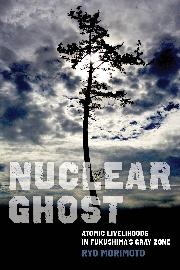Collaboration, Event Horizon Telescope. “
First M87 Event Horizon Telescope Results. IX. Detection of Near-horizon Circular Polarization.”
The Astrophysical Journal Letters 957 (2023): L20.
Read on IOP.orgEvent Horizon Telescope (EHT) observations have revealed a bright ring of emission around the supermassive black hole at the center of the M87 galaxy. EHT images in linear polarization have further identified a coherent spiral pattern around the black hole, produced from ordered magnetic fields threading the emitting plasma. Here we present the first analysis of circular polarization using EHT data, acquired in 2017, which can potentially provide additional insights into the magnetic fields and plasma composition near the black hole. Interferometric closure quantities provide convincing evidence for the presence of circularly polarized emission on event-horizon scales. We produce images of the circular polarization using both traditional and newly developed methods. All methods find a moderate level of resolved circular polarization across the image (divided by v divided by > < 3.7%), consistent with the low image-integrated circular polarization fraction measured by the Atacama Large Millimeter/submillimeter Array (divided by v(int)divided by < 1%). Despite this broad agreement, the methods show substantial variation in the morphology of the circularly polarized emission, indicating that our conclusions are strongly dependent on the imaging assumptions because of the limited baseline coverage, uncertain telescope gain calibration, and weakly polarized signal. We include this upper limit in an updated comparison to general relativistic magnetohydrodynamic simulation models. This analysis reinforces the previously reported preference for magnetically arrested accretion flow models. We find that most simulations naturally produce a low level of circular polarization consistent with our upper limit and that Faraday conversion is likely the dominant production mechanism for circular polarization at 230 GHz in M87*.
 Full Article.pdf
Full Article.pdf Johnson, Michael D., Kazunori Akiyama, Lindy Blackburn, Katherine L. Bouman, Avery E. Broderick, Vitor Cardoso, Rob P. Fender, and et al. “
Key Science Goals for the Next-Generation Event Horizon Telescope.”
Galaxies 11, no. 3 (2023).
Read on MDPI.comThe Event Horizon Telescope (EHT) has led to the first images of a supermassive black hole, revealing the central compact objects in the elliptical galaxy M87 and the Milky Way. Proposed upgrades to this array through the next-generation EHT (ngEHT) program would sharply improve the angular resolution, dynamic range, and temporal coverage of the existing EHT observations. These improvements will uniquely enable a wealth of transformative new discoveries related to black hole science, extending from event-horizon-scale studies of strong gravity to studies of explosive transients to the cosmological growth and influence of supermassive black holes. Here, we present the key science goals for the ngEHT and their associated instrument requirements, both of which have been formulated through a multi-year international effort involving hundreds of scientists worldwide.










